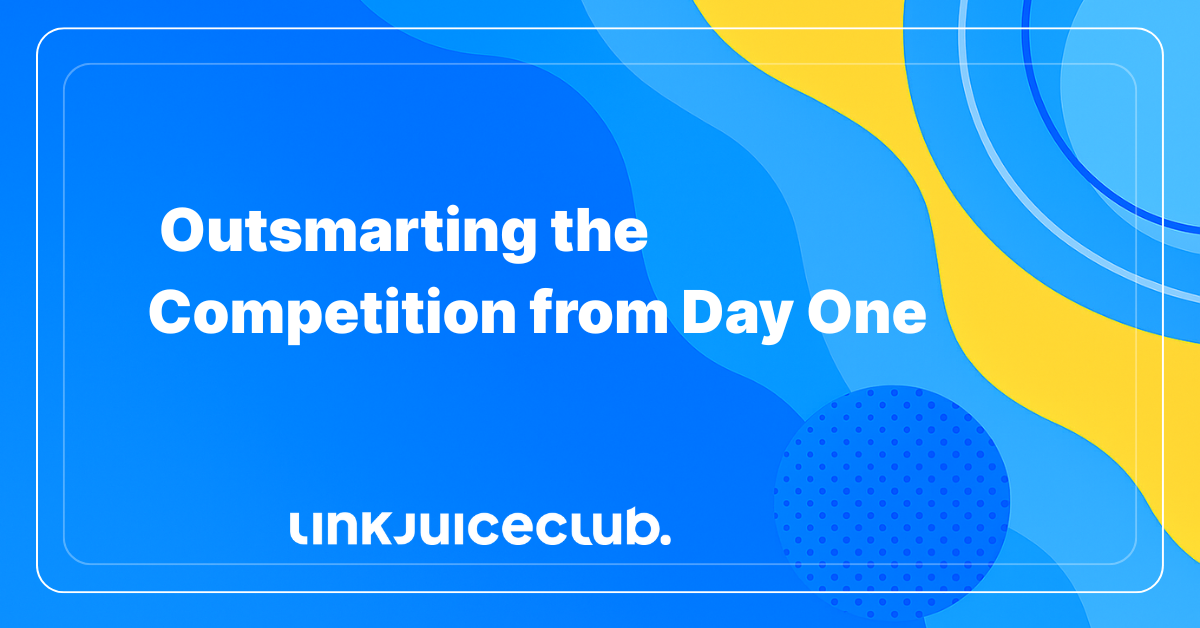
Market Moves: Outsmarting the Competition from Day One
Let’s be real: diving into a new market without scoping out the competition? That’s like showing up to a chess match blindfolded.
You’re not just launching a product, you’re stepping into an arena. And every player on that field has their own game plan, prices, perks, and loyal fans.
Want to survive? Better yet, want to dominate?
Then competitor analysis is your first line of defense (and offense). Done right, it reveals where to shine, what traps to dodge, and how to pitch your value like a pro.
Know Your Opponents: The 4 Flavors of Competition
Not all competition looks the same, where some shout their presence from the rooftops, others lurk quietly in the background. When stepping into a new market, you’ve got to play detective.
Understanding the types of competitors you’ll face? That’s your power move. It’s what separates the brands that wing it from the ones that win it.
Here’s the scoop: each competitor category tells a different story about the market you’re entering and the customers you’re trying to win over.
Competitor categories at a glance:
| Type | What They Do | Why They Matter 🔍 |
| Direct Competitors | Offer the same product to the same audience | They’re your mirror image: same goal, same fight |
| Indirect Competitors | Solve the same problem with a different approach | These guys sneak up on you with creative twists |
| Substitute Competitors | Offer an alternative customers can easily switch to | One wrong move and your customers could bounce |
| Emerging Competitors | Not big yet, but gaining steam fast, often disruptors or trend-setters | Ignore them now, regret it later |
Before you move forward with your strategy, label your competitors. Create a simple tracker (use Google Sheets or Airtable) and drop each name into the right category.
Use tools like Crunchbase, SimilarWeb, or Google Trends to spot emerging threats early. Stay sharp, today’s small fish could be tomorrow’s shark.
Face to Face with the Lookalikes: Direct Competitors
These are the brands you bump elbows with at the top of the search results. They’re not just in your industry, they’re in your lane, gunning for the same customers, with products that walk and talk a lot like yours.
If you don’t know who these players are, you’re walking into the arena blindfolded.
Direct competitors are the ones:
- Selling almost the same thing
- Targeting exactly the same crowd
- Using the same distribution channels (yup, they’re on all your platforms too)
- With similar pricing, features, and messaging
Think of it like this: you’re opening a burger shop, and they’ve already got a line around the block. Knowing what makes their line move helps you figure out how to build a better burger, or sell yours differently.
📌 Example: Launching a project management tool? You’re stepping into the ring with Asana, Trello, ClickUp, Monday.com… and maybe even Notion, depending on your angle.
How to Analyze Direct Competitors (Without Losing Sleep)
Your goal isn’t to copy what they’re doing, it’s to decode it. Reverse engineer their playbook and spot the cracks in their armor.
Create a side-by-side competitor matrix. Compare:
- Features & Functionality
- Pricing tiers
- Integrations
- Messaging & Value Propositions
- Customer reviews (especially the angry ones!)
💣 Pro Tip: Use tools like:
- BuiltWith (to peek under the hood of their tech stack)
- G2/Trustpilot (for raw user feedback)
- SEMrush or Ahrefs (to spy on their SEO and PPC strategies)
However in the process, don’t get obsessed with feature-matching. The goal isn’t to look like your competitors – it’s to look better. Differentiate or drown.
What You’re Really Looking For
Direct competitor analysis gives you the cheat codes for:
- Setting the right benchmarks (what’s “standard” vs what’s “innovative”)
- Spotting feature gaps you can fill
- Discovering underserved audiences
- Refining your messaging to hit harder and stand out
💣 Pro Tip: Always ask: “If a user is already using [competitor], what would make them switch?” That’s your north star.
The Silent Snatchers: Indirect Competitors
They don’t look like you. They don’t market like you. Their product might not even feel like yours. But guess what? They’re still after the same wallet you are.
Indirect competitors solve the same problem, just in a totally different way. These are the sneaky players you can’t afford to ignore. They might not be building a better mousetrap, but they’re still catching mice.
Here’s why they matter:
- They fulfill the same core need your product does
- Their users might not even know there’s a better option (that’s you!)
- They thrive on simplicity, habit, or affordability
📌 Example: Your team builds a sleek project management SaaS. But your potential customer? They’re managing tasks on Google Sheets or a whiteboard. Are those your rivals? Technically no. Strategically? 100% yes.

Spotting Indirect Competition: What to Look For
Ask yourself:
- What non-obvious solutions are customers already using?
- Is your product a new tool — or a smarter way to do something they’re already doing?
Scan for:
- General-purpose tools (Excel, email chains, sticky notes)
- Service-based alternatives (consultants, agencies)
- DIY solutions and free workarounds
💣 Pro Tip: Use forums like Reddit, Quora, or Product Hunt to uncover the creative (and sometimes clunky) ways people are solving the same problems your product addresses.
But, don’t go around ignoring the “old-school” players. Just because someone’s using pen and paper doesn’t mean they’re not a threat. Habits are hard to break even if your tool is objectively better.
Why Indirect Competitors Are Gold for Positioning
When someone’s already using a workaround, they’ve proven they need a solution. You just have to show them why your way is easier, faster, or more scalable.
Your messaging should focus on:
- Time saved
- Automation or simplification
- Long-term growth or flexibility
- Pain points of doing it the “old way”
💣 Pro Tip: Build switcher campaigns, case studies or ads specifically targeting folks who use those “close enough” tools. Show them the leap is worth it.
The Shape-Shifters: Substitute Competitors
They’re not in your category. They’re not stealing your branding. But guess what? They’re solving the exact same problem just with a completely different flavor.
Substitute competitors are those curveballs you didn’t see coming. And if you’re not paying attention, your audience might choose them over you without a second thought.
Here’s the lowdown:
- They appeal to customers when your offer feels too expensive, complex, or just… extra
- Convenience, affordability, or simplicity is often their superpower
- They quietly shape what your users expect from any solution in your space
📌 Example:
You run a private tutoring company. Your substitutes? YouTube tutorials, Khan Academy, ChatGPT-powered study tools, or $10 eBooks.
What to Watch With Substitutes
Review your funnel drop-offs, are they going to cheaper, DIY, or simplified options?
Pay attention to:
- Economic shifts (tight wallets = cheap hacks win)
- Tech advances that make switching easier
- Behavioral trends (speed > quality, mobile-first usage, etc.)
💣 Pro Tip: Set up Google Alerts for “[your product type] alternatives” to track what people are actually looking for when they don’t choose you.
But don’t go around thinking that you’re safe because the other guy “isn’t in your industry.” Reality check: the customer doesn’t care about categories, they care about solutions.
The Up-and-Comers: Emerging Competitors
These aren’t threats yet, but they’re gaining speed. Ignore them at your own risk.
Emerging competitors are the disruptors, the garage-born startups, and the next big thing just waiting for a funding round or a viral post.
They change the game by:
- Rewriting how solutions are delivered
- Launching new business models (freemium, on-demand, community-driven)
- Starting small but growing fast in overlooked markets
📌 Example:
You run a boutique HR consultancy. A new AI-driven hiring tool, still in beta, starts getting traction. It’s not competition yet, but it’s already catching your future client’s eye.
How to Spot Them Early
Make this part of your regular market routine. Track:
- Startup launches via Crunchbase or AngelList
- New product drops on Product Hunt or BetaList
- Industry newsletters, LinkedIn thought leaders, and venture capital blogs
💣 Pro Tip: Look for weird ideas that solve real problems, those are the ones that usually blow up.
Don’t make the mistake of dismissing them as “too niche” or “too small.” Remember when Netflix mailed DVDs? Yeah.

3 Frameworks to Decode the Competitive Chaos
Trying to make sense of your competitors without a framework is like mapping a jungle with a crayon. You’ll miss the hidden paths and walk straight into the traps.
That’s where structured models come in. Think of these as your strategy goggles: they turn noise into patterns and highlight where to play (and how to win).
Here are 3 battle-tested frameworks to break down your competitive environment before market entry:
1. Porter’s Five Forces: The Big-Picture Scanner
Developed by strategy guru Michael Porter, this model helps you understand the industry dynamics, not just the players. It’s perfect when you’re deciding whether to enter a market or avoid a headache.
| Force | What to Ask |
| Competitor Rivalry | Is everyone in a pricing war or feature frenzy? |
| Threat of New Entrants | Could a new player crash the party tomorrow? |
| Buyer Power | Do your customers have options galore? |
| Supplier Power | Can suppliers hike up prices and leave you stuck? |
| Threat of Substitutes | Could another solution replace you entirely? |
📌 Example: You’re entering the online pet food delivery market. Five Forces will help you gauge:
- Rival brands like The Farmer’s Dog and Ollie
- Threat from new entrants via Amazon or local co-ops
- Customer price sensitivity during inflation cycles
Pair this with industry reports (think Statista, IBISWorld) to uncover pricing power and barriers to entry.
2. Competitive Quadrant Matrix: The Visual Battlefield
This tool plots competitors on a two-axis grid. The axes can be anything like price vs. quality, simplicity vs. customization, tradition vs. innovation. It’s your best friend when spotting white space or planning brand positioning.
| Common Axes Ideas | Use When You Want to… |
| Price vs. Customization | See if competitors are serving premium or DIY audiences |
| Market Share vs. UX | Spot whether legacy tools are lagging in experience |
| Speed vs. Personalization | Understand trade-offs in automation-driven industries |
📌 Example: Launching a mental wellness app? Plot yourself against:
- Calm (high-quality, broad appeal)
- Insight Timer (free, feature-packed)
- A niche therapist-led tool (low-speed, high personalization)
Once plotted, identify:
- Crowded quadrants (hard to compete)
- Empty spaces (where you can lead)
🚫 Common Mistake: Making it too abstract. Use real data or customer reviews — not just vibes.
3. Perceptual Mapping: What Customers Really Think
This one flips the script: instead of your assumptions, you use actual user feedback to map out brand perception. The difference? Now you’re driving with a GPS instead of guesswork.
| What to Measure | What It Tells You |
| “Trendy vs. Classic” | Are you seen as cutting-edge or timeless? |
| “Affordable vs. Premium” | Are you a luxury brand or a budget lifesaver? |
| “Innovative vs. Outdated” | Does your tech feel modern or meh? |
📌 Example: You’re launching a sustainable fashion brand. Surveys reveal:
- You’re seen as “Trendy & Premium”
- Your main rival is seen as “Classic & Overpriced”
Another thing you could consider is to run surveys (30+ responses minimum) and plot results. Use Google Forms, Typeform, or even Instagram polls.
💣 Pro Tip: Re-run this quarterly. Perceptions shift fast — especially if your market is hype-driven or seasonal.
Side-by-side comparison: which framework fits where?
| Framework | Best For | Great In Industries Like… | Why Use It |
| Porter’s Five Forces | Big-picture industry insight | Food delivery, HR services, telecoms | Judge whether it’s smart to even enter the ring |
| Quadrant Matrix | Spotting strategic gaps | SaaS, eCommerce, digital health | Position yourself where others aren’t |
| Perceptual Mapping | Understanding brand image & audience | Fashion, beauty, consumer tech | Build a brand that feels aligned with user values |
The Bottom Line: Mastering Your Competitive Landscape Before You Launch
Breaking into a new market? Don’t wing it. A strategic competitor analysis is your unfair advantage.
By identifying direct, indirect, substitute, and emerging competitors, you start to see the full chessboard, not just the square in front of you. And with frameworks like Porter’s Five Forces, quadrant mapping, and perceptual analysis in your toolkit, you’re not planning to win.
💣 Stay proactive, not reactive. Because in today’s market, the smartest player wins, not just the loudest.





